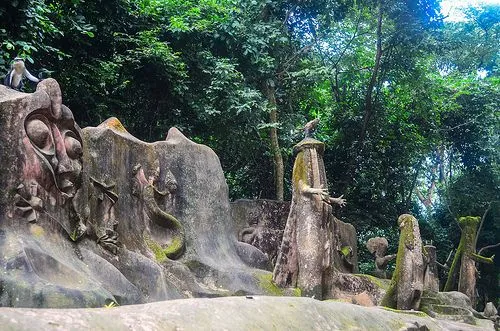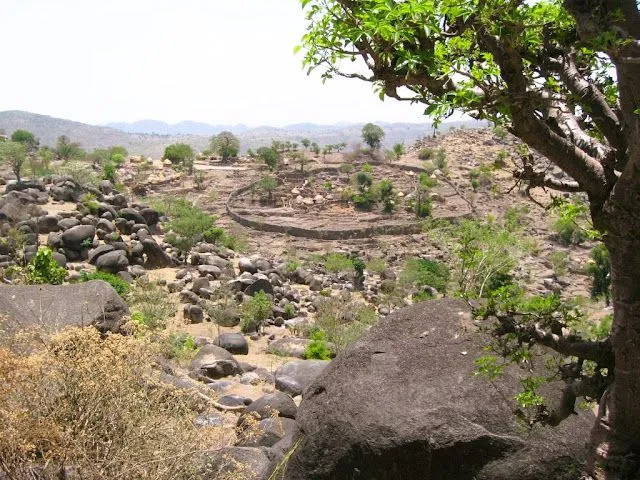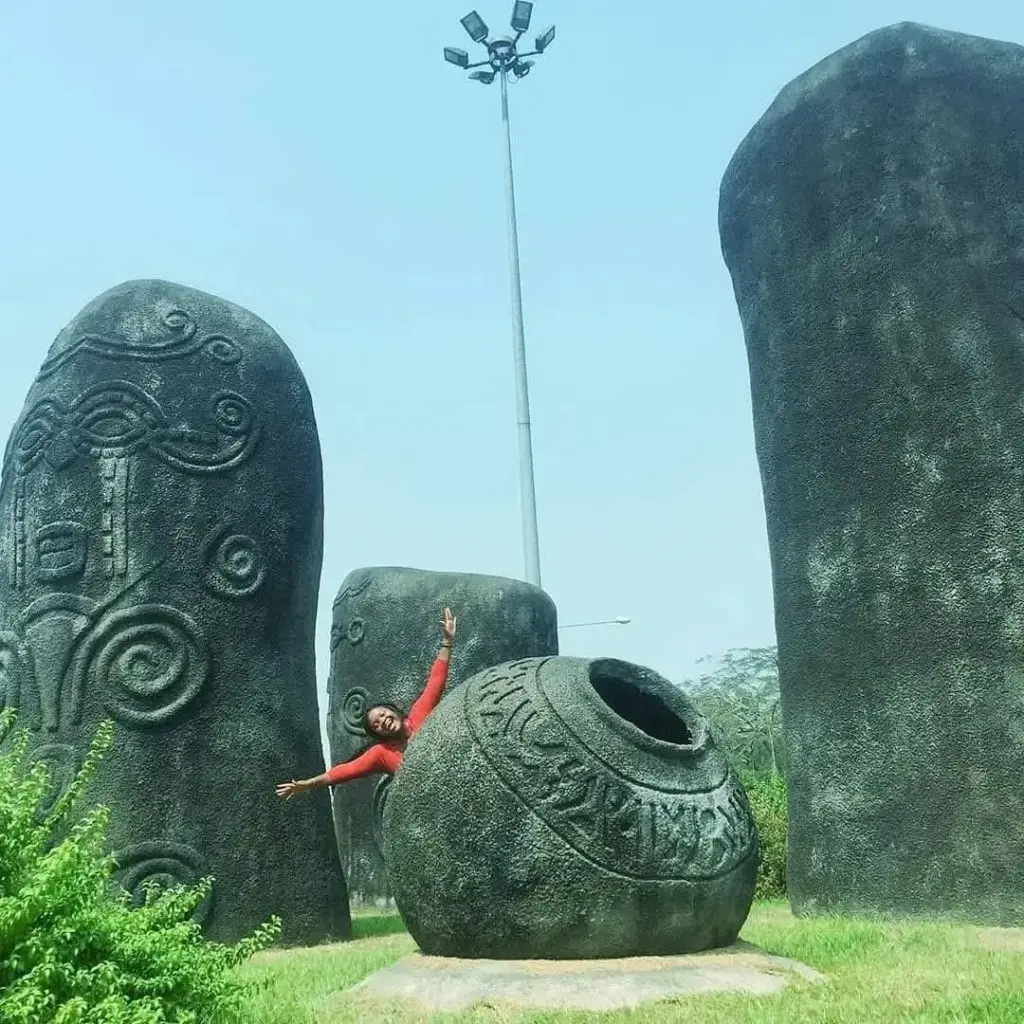
Table of Contents
Introduction
Nigeria holds some of the world’s most remarkable ancient sites, where traditional architecture in Nigeria tells stories of ingenuity and endurance. These landmarks are not just ruins, they are living testament to how communities built with local materials like mud, stone, and laterite to create structures that have stood for centuries. With over 2,000 years of history, these spots blend art, defense, and spirituality in ways that still influence Nigerian architecture today.
According to UNESCO, two of these sites are World Heritage treasures, drawing travelers eager for authentic experiences. But as cities grow, these wonders face real pressures from development and climate shifts. In this post, we will walk through the top 10 epic ancient landmarks, spotlighting their unique builds, the legends behind them, the challenges they face, and simple ways you can visit without adding to the strain.
RELATED BLOGPOST
Powerful Traditional Nigerian Architecture: Styles & Cultural Roots
Architectural Designs in Nigeria: Blending Tradition with Modernity
Architectural Designs: A Beginner’s Guide to Building Design
3 Key Qualities of Architectural Design You Should Know
Consult Imprexi for your project, go through our portfolio today.
Why Traditional Nigerian Architecture Stands Out
Traditional Nigerian architecture varies wildly across regions, reflecting the diversity of Nigeria’s 250+ ethnic groups. In the north, Hausa builders mastered adobe bricks for towering walls that regulated heat in the Sahel. Down south, Yoruba and Igbo craftspeople used thatch roofs and carved wood to harmonize with tropical forests. These techniques relied on community labor and natural resources, creating eco-friendly designs long before sustainability became a buzzword.
What makes Nigeria architecture so captivating? It is the fusion of function and symbolism. A simple mud wall might double as a fortress and a canvas for ancestral motifs. Recent studies show these methods could inspire modern green building. Imagine using local clay to cut urban heat by 20%.
As we spotlight the top 10, keep an eye on how each site embodies this blend.
The Top 10 Epic Ancient Landmarks
Let us get to the highlights. These 10 sites, drawn from UNESCO lists and local histories, showcase the best of traditional architecture in Nigeria. We have included quick facts on how they were built, the tales they hold, current risks, and a no-fuss travel note for each.
Sukur Cultural Landscape (Adamawa State)

Image on Pinterest
Nestled in the Mandara Mountains, Sukur feels like a stone-carved village from another era. This UNESCO site features terraced fields and dry-stone houses that cling to steep slopes, a hallmark of traditional nigerian architecture adapted to rugged terrain.
Building Know-How: Locals stacked flat stones without mortar, using iron tools forged on-site for precision. These terraces, over 500 years old, prevent soil erosion while channeling water; smart engineering from pre-colonial times.
Cultural Backstory: Sukur was a hub for ironworking and trade, with the king’s palace serving as a ritual center. Elders still perform ceremonies here to honor ancestors, linking past to present.
Modern Pressures: Droughts and overgrazing erode the stones faster now. Community efforts plant cover crops, but more funding could help.
Travel Tip: Fly into Yola, then drive 2 hours. Entry is about ₦500; go in the cool dry season (November to March) and hire a local guide for the 3-hour hike.
Osun-Osogbo Sacred Grove (Osun State)
Step into this lush forest shrine, and you will see Nigerian architecture at its spiritual peak. Wooden sculptures and mud altars dot the paths, dedicated to the Yoruba river goddess Osun.
Building Know-How: Artisans molded red earth into platforms and carved iroko wood for statues, blending them seamlessly with the grove’s trees for a living sanctuary.
Cultural Backstory: Founded in the 17th century, it is the heart of an annual festival where thousands seek blessings for fertility and health. The German artist Susanne Wenger helped restore it in the 1950s, preserving its magic.
Modern Pressures: Osogbo’s urban boom brings pollution and illegal logging, threatening the delicate ecosystem.
Travel Tip: Join the August festival for vibrant vibes, but book ahead. Wear comfortable shoes for the 1km trails; modest dress shows respect.
Ancient Walls of Kano (Kano State)
These 14km-long earth ramparts encircle old Kano, rivaling the Great Wall in scale but built with humble mud.
Building Know-How: Layers of sun-baked adobe, reinforced with palm fronds, created walls up to 20 meters high. Communal work parties finished sections in months.
Cultural Backstory: Erected in the 15th century by Sarki Muhammadu Rumfa, they guarded against invasions while symbolizing the Hausa city’s wealth in leather and textiles.
Modern Pressures: Road expansions have crumbled parts, with 30% lost since the 1970s.
Travel Tip: Start at the Gidan Rumfa museum for context, then walk the intact stretches. Combine with a dye pit tour, perfect for a half-day outing.
Benin Moat and Walls (Edo State)
Spanning 16,000km, this is the largest man-made structure on Earth, a testament to Benin Kingdom’s might.
Building Know-How: Ditches dug 20 meters deep were piled into concentric walls using laterite soil, with moats for defense.
Cultural Backstory: Commissioned by Oba Oguola in the 13th century, they protected a bronze-casting empire whose art influenced global collections.
Modern Pressures: Oil extraction nearby causes subsidence, cracking the earthworks.
Travel Tip: Base in Benin City and visit the National Museum first. Early mornings beat the heat; guides cost ₦2,000.
Sungbo’s Eredo (Ogun State)
Bigger than the walls of Benin, this Ijebu earthwork stretches 160km through forests.
Building Know-How: Laterite trenches, 10 meters deep, were hand-dug by thousands, forming a natural barrier.
Cultural Backstory: Linked to the mythical Queen Bilikisu Sungbo, it marked sacred boundaries for the Ijebu people.
Modern Pressures: Farming and roads nibble at its edges, reducing visibility.
Travel Tip: Rent a 4×4 from Ijebu-Ode; pack snacks for the remote access points.
Nok Settlement (Kaduna State)
As Africa’s oldest iron-age site, Nok’s terracotta figures hint at early sculptural genius.
Building Know-How: Mud molds for pots and sculptures, fired in open pits, show advanced clay work from 1000 BCE.
Cultural Backstory: Nok people pioneered farming and metal tools, influencing later West African art.
Modern Pressures: Artifact smuggling depletes the site yearly.
Travel Tip: Visit the nearby Jos Plateau Museum; dry season avoids mudslides.
Ogbunike Caves (Anambra State)
These Igbo rock shelters feature vine ladders and ritual carvings inside dripping caverns.
Building Know-How: Nature’s erosion shaped the caves, enhanced by carved altars from soapstone.
Cultural Backstory: Used as hideouts during slave raids, they are tied to Chukwu, the supreme deity.
Modern Pressures: Heavy foot traffic wears paths; litter is a growing issue.
Travel Tip: Grippy shoes essential for the 317 steps; tours run ₦1,000.
Alok Ikom Monoliths (Cross River State)
Over 300 phallic stone pillars stand in groves, etched with symbols.
Building Know-How: Quarried sandstone, polished and inscribed, erected in circles for ceremonies.
Cultural Backstory: Ekoi fertility rites centered here, dating back 2,000 years.
Modern Pressures: Logging clears surrounding woods, exposing stones to weather.
Travel Tip: Stay in a village guesthouse for stories from elders.

Idanre Hills (Ondo State)
Granite steps climb to abandoned Yoruba settlements atop misty peaks.
Building Know-How: 680 hand-hewn steps lead to stone houses fitted without cement.
Cultural Backstory: A 19th-century refuge from wars, now a spiritual site.
Modern Pressures: Quarry mining nearby risks landslides.
Travel Tip: Summit at dawn for views; 2-hour climb rewards with fresh air.
Igbo-Ukwu Bronzes Site (Anambra State)
Buried treasures of lost-wax castings reveal a sophisticated 9th-century society.
Building Know-How: Copper alloys poured into intricate molds for ritual vessels.
Cultural Backstory: Linked to the Nri Kingdom, showcasing early trade networks.
Modern Pressures: Illegal digs destroy context for collectors.
Travel Tip: See replicas at Enugu Museum; pair with a palm wine tasting.
Urbanization Threats and Ways to Protect These Sites
Traditional architecture in Nigeria faces tough odds from rapid city growth. In places like Kano, new buildings swallow historic walls, while floods from climate change wash away mud structures. Reports indicate 25% of heritage sites could vanish by 2050 without action.
Communities lead the charge: In Osun, locals patrol groves against loggers. You can pitch in by choosing eco-tours or donating to groups like the National Commission for Museums and Monuments. Simple steps, like sticking to paths, make a difference. Supporting these efforts keeps Nigeria architecture alive for generations.

Image by JettsWorld on Pinterest
Essential Travel Tips for Your Nigerian Landmark Adventure
Are you planning a visit? Below is straightforward advice to make it smooth.
- Timing: Stick to the dry season (November to April) to dodge rains that turn paths to sludge.
- Budget Basics: Expect ₦100,000-200,000 for a week, covering transportation, guides, and entries. Bargain for group rates.
- Getting Around: Use apps like Bolt in cities; for remote spots, join organized tours from Lagos or Abuja.
- Stay Safe and Green: Register with your embassy, drink bottled water, and pack out trash. Opt for homestays to boost local economies.
These tips turn potential hassles into highlights, letting you focus on the wonders.
Conclusion
From the towering walls of Kano to the whispered caves of Ogbunike, these top 10 landmarks capture the essence of traditional architecture in Nigeria, resilient, creative, and deeply rooted in culture. They have weathered empires and eras, but today’s threats remind us to tread lightly.
Read More: Architectural Principles: A Beginner’s Guide
FAQ
1. What defines traditional architecture in Nigeria?
Traditional architecture in Nigeria uses local materials like mud, stone, and wood, shaped by ethnic groups for climate and culture. It is practical yet symbolic, from Hausa adobe to Yoruba carvings.
2. Are these ancient landmarks safe to visit?
Yes, most are accessible with guides. Stick to marked paths and check travel advisories, millions visit yearly without issues.
3. How can I contribute to preserving Nigeria architecture?
Support local NGOs, choose ethical tours, and spread awareness online. Small actions add up to protect these irreplaceable sites.




